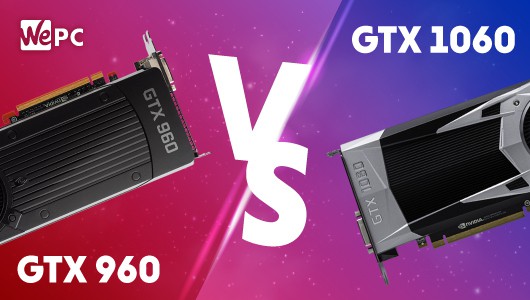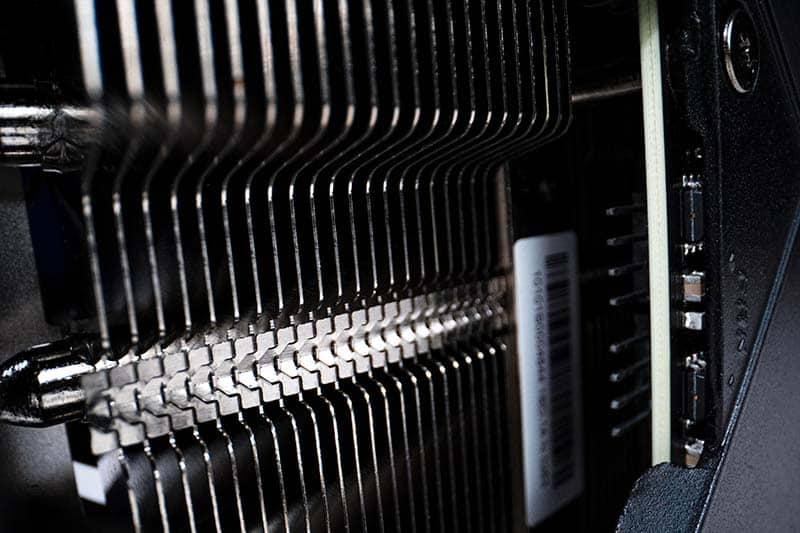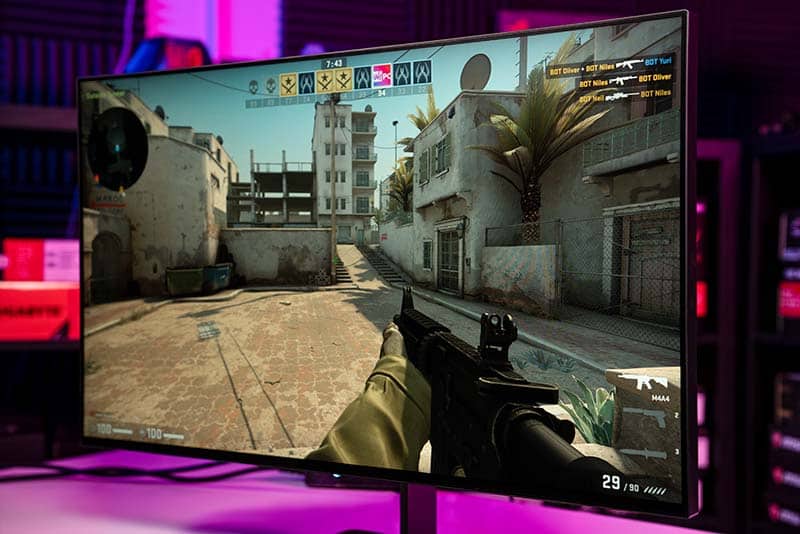GTX 960 vs GTX 1060
This article puts some of Nvidia’s older efforts under the microscope, namely the GTX 960

With the GTX 10-Series fighting for relevance in the wake of the 16-Series and the groundbreaking RTX family of GPUs, it’s hardly a surprise the preceding GTX 900 series has started to fall into obscurity as of late. They only saw a commercial release in 2014, which really wasn’t that long ago.
Old though they may be, they still have a place in the market and, of course, our hearts, so we’ve put the classic GTX 960 in vs match against its superseder, the GTX 1060 to see how it holds up in 2022.
No items found.
Architecture
Being from completely different GPU families, there are some serious differences between the 960 and 1060’s microarchitecture. The GTX 900-Series was the first and only GPU family to be built on Nvidia’s Maxwell architecture, showing a marked improvement in graphics capabilities and energy efficiency.
The GTX 10-Series, on the other hand, features the GP106-400-A1 variant of Nvidia’s much-beloved Pascal microarchitecture that enhanced performance by a proportionally larger degree than Maxwell did when it succeeded Kepler. It offered improvements in the form of unified memory, twice as many registers per CUDA core, and advanced color compression.
Moving on to the specific variants in question, you’ll see that the 1060 offers 256 more CUDA cores than the 960, a differential of 25%. If you take into account the improvements made to each Pascal core, it’ll be an even larger differential.
The 1060 continues to peacock bolstered specs afforded by its Pascal variant, featuring 25% more texture units (80 vs 64), 4.4 billion transistors to the 960s 2.94 billion, 16 more render units (48 vs 32), 10 SMs to the 960s 8, and a much improved L2 cache (1536KB vs 1024KB). Clock speeds are also vastly improved on the Pascal card. From the 900-Series card’s base of 1127MHz and boost of 1178MHz, we move upwards to a base of 1506MHz and a boost clock of 1709MHz.
Cooling
Both cards pull 120 watts, but the 960 actually has the 1060 beat in terms of thermal capacity, able to withstand temperatures up to 98°C, which is great because being an older card, newer games are really going to push it to its limits. In light of this, even though it has that extra capacity, it’s definitely worth forking out for optimal cooling systems, which shouldn’t be a problem as 960’s are pretty affordable.
The 1060 doesn’t mind anything up to 94°C, and it can run pretty hot, frequently hitting temperatures above 80°C. This is totally within spec, but if you plan on pushing it, we recommend you have at least two intake fans in your case, or better yet, a custom loop.

Dimensions
Going against technological norms that strive to create smaller and smaller hardware, the 1060 is actually fractionally larger than the somewhat antiquated 960, so if you’ve got burgeoning space issues, the 960 may be the one for you.
It may be smaller overall, measuring 4.376” (H) x 9.5” (L) x 2-slot (W), as opposed to the 1060’s measurements of 4.378” (H) x 9.823” (L) x 2-slot (W), but from die size (228mm2 vs 220mm2) to the 28-nm process size, the 960 is larger than the 1060 in every other respect.
Resolution and Frames Per Second
We could talk specs all day, but it’s all just words and numbers on a screen until we see what kind of performance they facilitate, so without further ado, let’s get down to the good stuff.
1080p
The GTX 960 performs admirably in 1080p on max settings. It doesn’t win a thing, god bless its silicone soul, falling below the 40fps zone during challenging games such as The Witcher 3, but it pumps out some serious frames on certain titles. During CSGO and League of Legends, it breaks the 100fps average with no problems at all, and during Minecraft, it hits an impressive 180fps.
We are, of course, being kind, as truthfully – and we can’t stress this enough – the 1060 slaughters the 960 no matter the game. Drawing victories ranging from 16% (CSGO) to 64% (WoT, PUBG), and securing an overall win of 46%, 1080p is a triumph for the 1060.
1440p
It won’t be a shock to anyone, but we’ll say it anyway. The 960 does not like 1440p. Across a number of games, you can expect it to muster an average of around 28fps, while the 1060 – also not really thriving – can hit around 48.7, amounting to a gigantic 75% 1440p victory.
4K
Give up hope yee that follow the GTX 960 beyond this point! 4K had only existed in televisions for 2 years before the 900-Series was released, so they’re not exactly equipped to tackle this kind of pixel-heavy workload.
A GTX 960 in 4K will probably achieve an average of 16fps. It’s not really practical on any level to try this. We were just impressed it didn’t melt! The 1060 will almost certainly fall below the 30fps zone in 4K, but that’s enough to claim a 76% victory.

Ray Tracing
Needless to say, neither of these GPUs feature RT cores, which means they don’t have ray tracing abilities. That privilege is reserved for the RTX family of GPUs alone.
It’s different from hardware ray tracing, but if you really wanted to give it a go, you can turn on software ray tracing on GTX cards, but it takes a huge toll in the of performance. Honestly, the 1060 will suffer under the ray tracing workload, and the 960, struggles even further.
VRAM
Originally, the GTX 960 came with a 2GB GDDR5 memory, a 128-bit bus interface, and 112.2GBps bandwidth, amounting to a maximum effective memory speed of 1753MHz (7GBps). Unfortunately, though, they’ve been almost entirely phased out due to their inability to cope with modern gaming and the fact that their AMD competition in the market was significantly better. You can still find them, but nowadays, it’s probably best to look for a 4GB variant.
The 1060 has a 6GB GDDR5 buffer, a 192-bit bus interface, 192GBps bandwidth, and a total speed of 2002MHz (8GBps), so it’s improved on all counts but for the buffer type, but you don’t see GDDR6 in GTX until you hit the 16-Series anyway.
No items found.
Verdict
It’s 1060 all the way which was always going to be the case. It’s not just a little bit better either. These cards are oceans apart in terms of gaming abilities, yet somehow, there’s a little bit of overlap when it comes to price tags. If you’re interested at all in futureproofing or 1440p gaming, you’ll choose the 1060 over the 960.
The 960 offers bare minimum capacities for modern gaming at mid to high settings in 1080p. Anything beyond that is asking a bit too much, but it’s definitely still got a place for PC gaming. If you’re an absolute novice, not sure if you’ll stick with it, it’s an affordable and capable place to start, allowing you to test the waters and see how you feel. It’s a dinosaur, but the RTX asteroid is yet to kill it.

